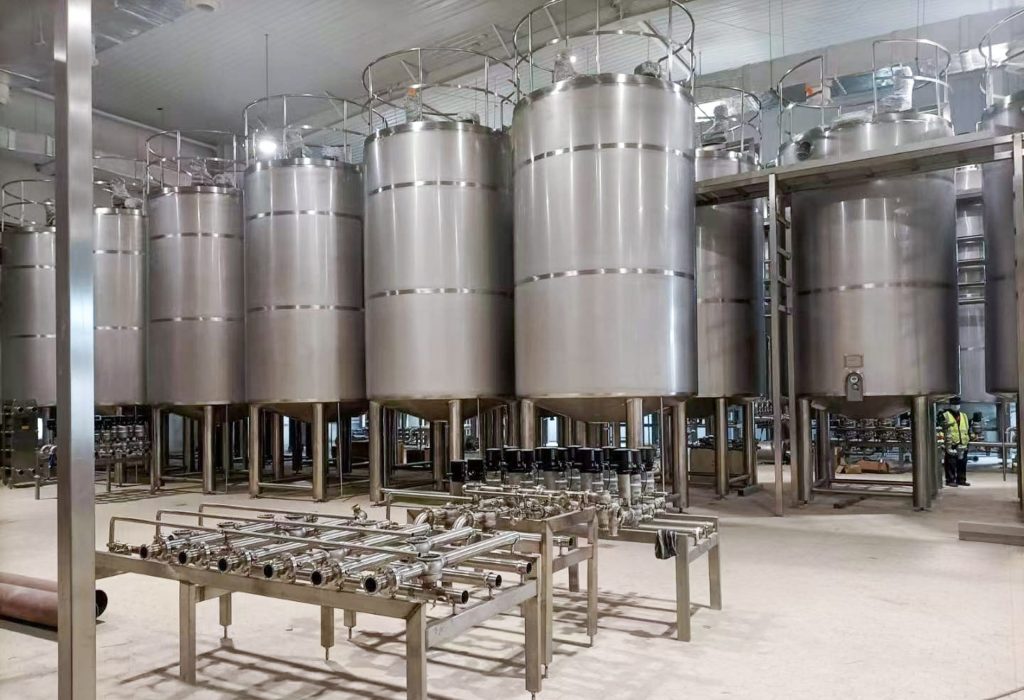Introduction

In the realm of food production, cleanliness isn’t just about appearances; it’s a critical factor in ensuring safety and quality. At the heart of maintaining hygiene standards lies the Clean In Place (CIP) system—a sophisticated technology designed to automate the cleaning of process equipment without the need for disassembly. This blog explores the pivotal role of clean in place system in food production, delving into their components, benefits, and operational significance.
Understanding Clean In Place Systems
What is a Clean In Place System?
A Clean In Place (CIP) system is an automated method used to clean the interior surfaces of equipment such as pipes, tanks, and vessels within food processing facilities. Unlike traditional manual cleaning methods, clean in place system utilize specialized cleaning agents, heat, and mechanical action to effectively remove residues and sanitize equipment. This automated process not only ensures thorough cleanliness but also reduces labor costs and minimizes the risk of human error in cleaning procedures.
Components of a CIP System
A typical CIP system comprises several essential components:
- Cleaning Agents: These are chemical solutions tailored to dissolve specific residues and sanitize equipment surfaces effectively. The selection of cleaning agents depends on factors such as the type of residue, equipment material, and regulatory requirements.
- Heat Exchangers: Equipment used to heat or cool cleaning solutions to optimal temperatures, enhancing the effectiveness of cleaning agents and ensuring thorough sanitation.
- Pumps and Valves: Devices that control the flow and direction of cleaning solutions through the system, facilitating the circulation and removal of contaminants from equipment surfaces.
- Monitoring and Control Systems: Sensors, controllers, and software that automate and regulate the cleaning process, ensuring consistency and adherence to predefined cleaning parameters.
Importance of Clean In Place Systems in Food Production
Ensuring Food Safety
In the food industry, maintaining stringent hygiene standards is paramount to ensuring consumer safety and complying with regulatory requirements. clean in place system play a crucial role in achieving and maintaining these standards by thoroughly cleaning and sanitizing equipment surfaces. By eliminating microbial contamination and preventing cross-contamination between batches, clean in place system contribute significantly to enhancing food safety protocols.
Improving Efficiency and Productivity
The implementation of clean in place system streamlines the cleaning process, reducing downtime between production runs. This operational efficiency translates into increased productivity as production cycles can be expedited without compromising on cleanliness standards. By automating repetitive cleaning tasks, CIP systems allow personnel to focus on other critical aspects of food production, thereby optimizing overall operational efficiency.
Maintaining Product Quality
Clean equipment is essential for preserving the quality and integrity of food products. Residues left on equipment surfaces can alter product flavor, texture, and appearance, leading to inconsistencies in sensory attributes. clean in place system effectively remove residues and contaminants, ensuring that food products meet desired quality standards and consistently deliver superior taste and appearance to consumers.
Case Study: Implementing a CIP System

To illustrate the practical benefits of clean in place system, consider the following case study from a food processing facility:
| Equipment | Before CIP | After CIP |
|---|---|---|
| Mixing Tank | Residue from previous batch | Clean and sanitized |
| Pipeline | Accumulated sediment and debris | Clear of contaminants |
| Storage Vessel | Sticky residues | Ready for next batch |
In this case, the implementation of a CIP system resulted in equipment that was consistently clean and ready for use, thereby maintaining high hygiene standards and operational efficiency within the facility.
Conclusion
Clean In Place (CIP) systems are indispensable tools in modern food production facilities, offering automated solutions to maintain cleanliness, ensure food safety, and uphold product quality. By leveraging advanced technology and systematic cleaning procedures, CIP systems enable food manufacturers to comply with stringent regulatory requirements and meet consumer expectations for safe and high-quality food products.
FAQ
Q:How often should clean in place system be used?
A:Clean in place system should be used after each production run to ensure equipment is thoroughly cleaned and sanitized before the next batch begins.
Q:What cleaning agents are used in CIP systems?
A:Cleaning agents vary depending on the type of residue and equipment being cleaned but commonly include alkaline, acid, and enzymatic solutions.
Q:Can clean in place system be customized for different applications?
A:Yes, clean in place system can be tailored to meet specific cleaning requirements based on factors such as equipment type, residue characteristics, and regulatory standards.

